| Cerastoderma edule (Linnaeus, 1758) |
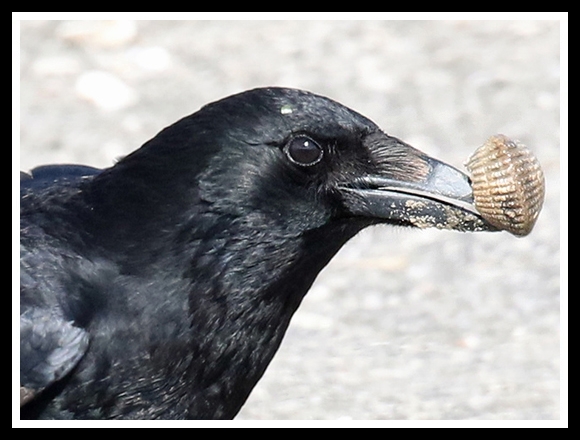 |
Barents Sea to Sénégal, Alborán Sea. Intertidal to shallow subtidal, burried in sand or mud. Suspension feeder.
Original taxon: Cardium edule. Synonyms: belgicum, crenulatum, mercatorium, but also obtritum (decried, despicable), vulgare and vulgatum.
As Linné’s name suggests, the species is edible: here, a specimen from the Irish Sea, collected by a Corvid at low tide on the strand near the lighthouse at Leasowe, west of Liverpool, Merseyside County, Northwestern England. Original picture provided by R. Lowry for iNaturalist – (CC BY-NC). |
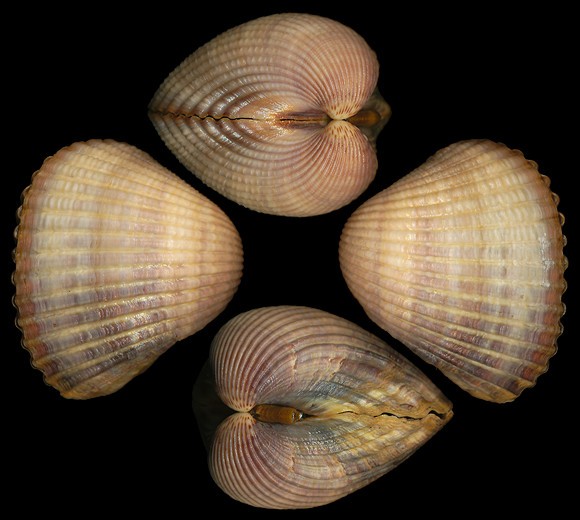 |
Variants maculata, nuciformis, regularis, etc.
30m deep, on muddy sand, Málaga, Andalucia, S. Spain. 40mm. |
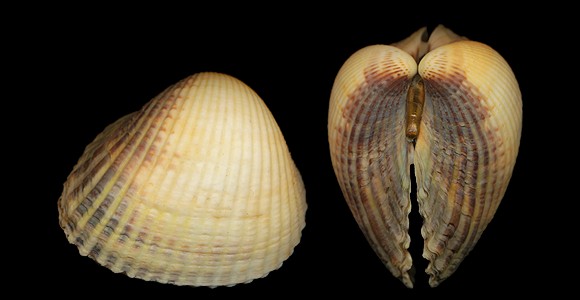 |
| Specimen from Rio de Oro, Western Sahara, low tide. 40,5mm. |
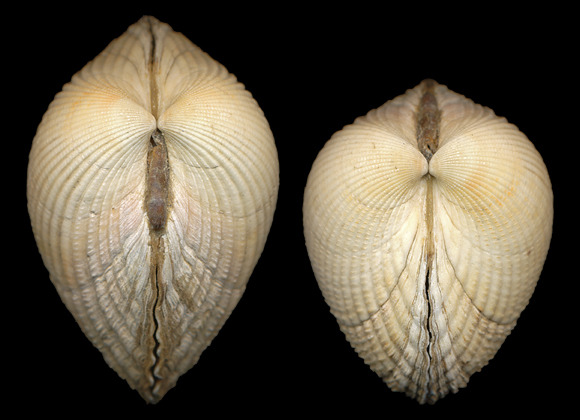 |
Large specimen from English Channel.
At very low tide on muddy sand, Pointe du Chevet, St-Jacut de la Mer, N. Brittany, NW. France. 46mm. |
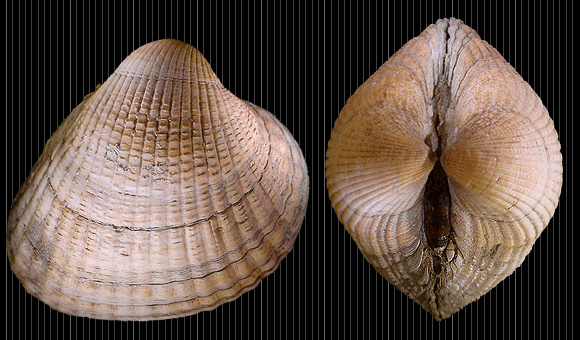 |
Extreme low tide on fine sand, near La Margatière reef, Pointe du Chevet. 47,5mm.
In edule, the ribs appear on the inner face of the valves only near the margins, while they are entirely visible inside the valves of glaucum, which are thinner. |
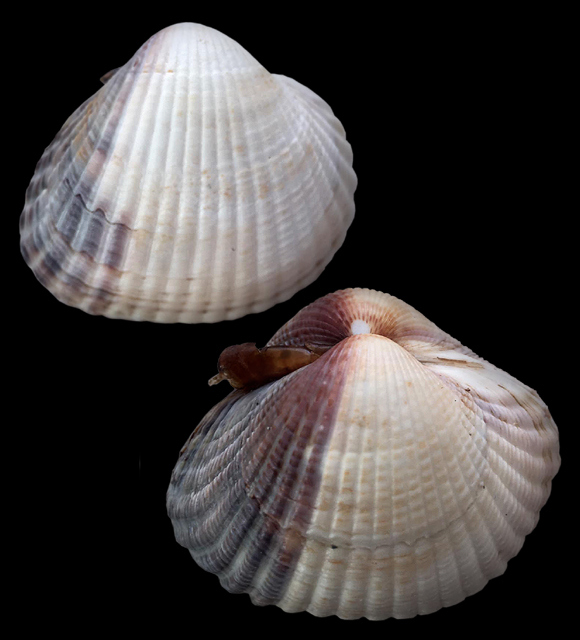 |
| Huge shells collected long time ago at Nieuwpoort-aan-Zee, Koksijde, West Flanders, Belgium. Sizes about 54mm. Original pictures provided by F. Swinnen (BE) – (CC BY-NC-SA). « Nowadays you don’t find them that big any more. » |
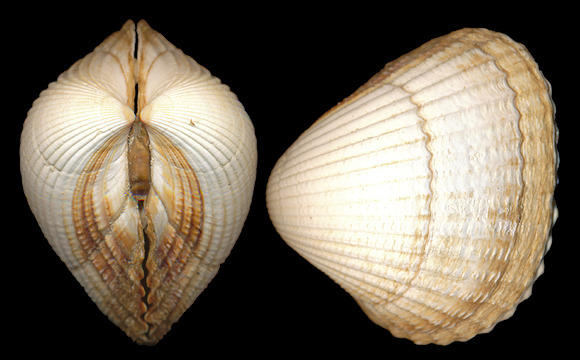 |
| Coloured specimen collected in muddy sand at low tide, Callot island, Carantec, N. Brittany, NW. France. 38mm. |
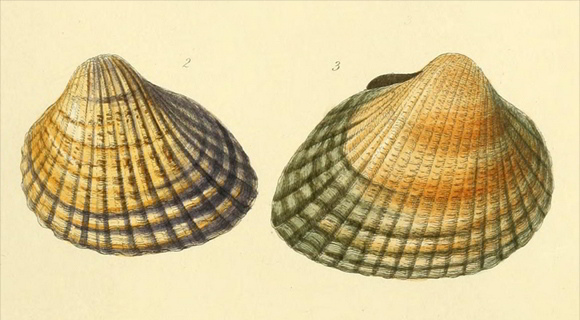 |
| Cardium edule drawn in Forbes & Hanley: A history of British Mollusca and their shells, vol. 1, London 1853, via BHL. |
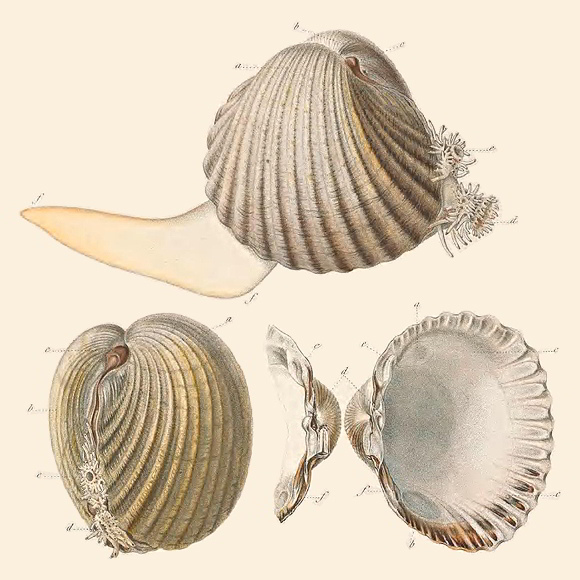 |
| Cardium edule in G. P. Deshayes: “Hist. Nat. Mollusques t. I”, Exploration scientifique de l’Algérie, Paris 1844-1867, via BHL. You can notice the strong internal marginal ribbing, which vanishes inside the shell. See C. glaucum for the differences. |
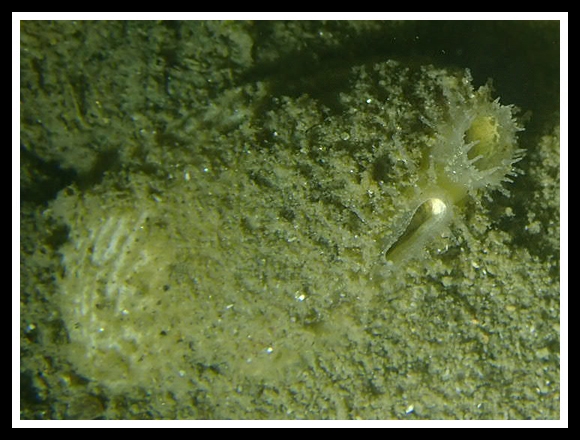 |
The two siphons on a specimen from subtidal muddy sand, Saint-Suliac, Bassin de la Rance, NE. Brittany, NW. France. Original picture provided by P. Corbrion for iNaturalist.
– (CC BY-NC) – |
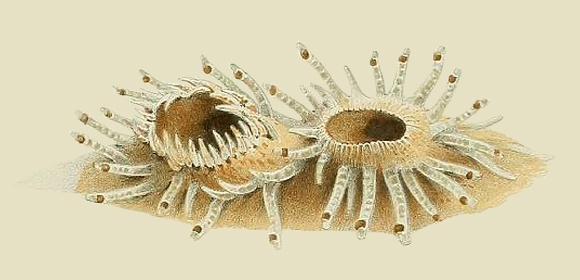 |
The siphons in Meyer & Möbius: Fauna der Kieler bucht vol. 2, Leipzig 1872, figure 2 of Cardium edule.
« Siphons short; the upper thinner and shorter than the lower; colour yellowish translucent and spotted brown. Both carry several rows of cirri, which are conical, truncated. There are about 40 on the edge of the entrance tube, 6 to 8 of which are significantly larger than the others. The lower cirrus has a concave end surface that carries hair. Underneath is an inner swelling with brown pigment: the eyes according to Will (Froriep’s Notes, No. 622). » – op. cit. p.88. |










